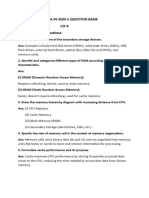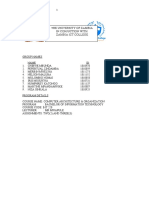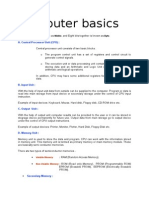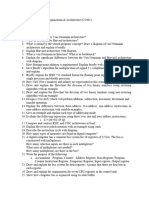Madan Mohan Malaviya University of Technology, Gorakhpur
Electronics and Communication Engineering Department
DIGITAL ELECTRONICS AND COMPUTER ORGANIZATION (BEC-201)
TUTORIAL: - UNIT-IV
Q.1. Define CPU registers, Main memory, Secondary memory and cache memory?
Q.2. Differentiate volatile and non volatile memory organization?
Q.3. What is the necessity of multilevel memory? Further, explain the memory hierarchy used in
computer systems.
Q.4. Differentiate between the different kinds of ROMs
Q.5. Explain about ROM and PROM in detail.
Q.6. Define Random Access Memory and types of RAMs present?
Q.7. Differentiate SRAM and DRAM?
Q.8. Draw and explain the operation of basic SRAM and DRAM cell.
Q.9. Define cache memory? Explain how it is used to reduce the execution time?
Q.10. Differentiate Virtual memory and Cache memory.
Q.11. Explain the mapping procedures adopted in the organization of a Cache Memory?
Q.12. Define HIT ratio, MISS ratio and Memory Access Time in memory with an example?
Q.13 Consider a 2-level memory hierarchy consisting of a cache memory M1 and M2. Suppose that
the cache is 6-times faster than the main memory, and the cache can be used 90% of the time.
How much efficiency and speedup do we gain by using the cache.
Q.14 Describe the virtual memory organization and explain in detail?
Q.15 Explain the following
a. virtual or logical address?
b. memory management unit (MMU)
c. Translation Look-aside Buffer (TLB)
Q.16. Explain the multiple bus organization with the help of a diagram.
Q.17. Distinguish between a synchronous and an asynchronous data transfer
Q.18 Write short notes on following
a. Interfacing keyboard,
b. Display,
c. Auxiliary storage devices,
d. Printers.
e. I/O cards in personal computers
Q.19 Explain DMA Controller with the block diagram?
Q.20 What is a Supercomputer? Briefly explain the development of Indian Supercomputer ‘PARAM'.























































